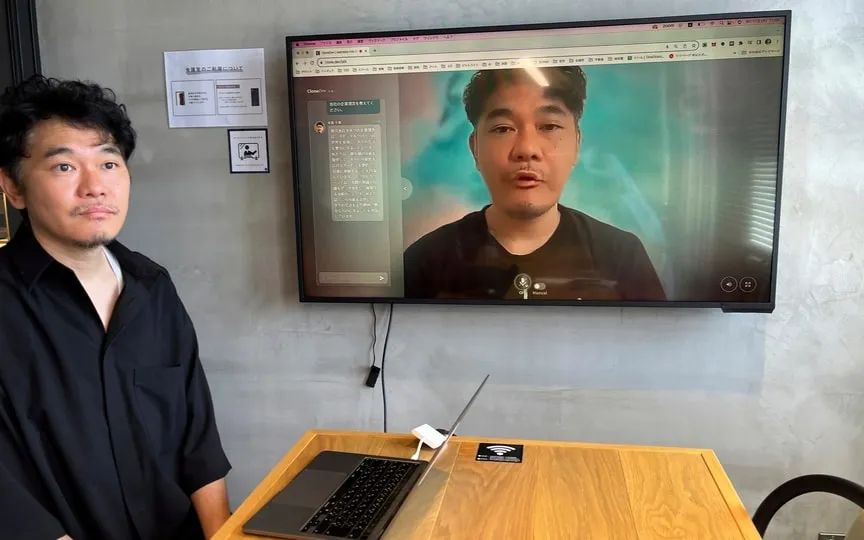Could Digital Clones and Vocaloids be Misunderstood Outside of Japan?
Kazutaka Yonekura envisions a future where each individual possesses a personal digital “clone” – an internet-based avatar capable of assuming certain responsibilities and tasks, like representing us in Zoom meetings.
Yonekura, CEO of Tokyo startup Alt Inc., believes it could make our lives easier and more efficient.
His company develops a digital double, an animated image that looks and talks just like its owner. A digital clone can be used, for example, by a recruiter for a preliminary job interview or by a doctor to screen patients before examinations.
“This frees you from all the routine (tasks) that you have to do tomorrow, the day after tomorrow and the day after,” he told The Associated Press as he showed off his doppelgänger — a thumbnail of Yonekura on a computer screen. , with a synthesized version of his voice.
When his digital clone is asked “What kind of music do you like”, it pauses for several seconds and then continues with a long-winded explanation of Yonekura’s love of energetic rhythmic music such as hip-hop or rock ‘n’ roll.
A bit mechanical perhaps – but all social confusions have been programmed out.
Yonekura, 46, claims the technology is more personal than Siri, ChatGPT or Google AI. Most importantly, it belongs to you and not the tech company that created it, he said.
For now, the digital double is expensive. Each Alt clone costs around 20 million yen ($140,000), so it will likely take a while to find a clone for everyone.
When creating a digital double, information about a person is collected from social media sites and publicly available records in a massive data collection project and stored in software. The information is constantly updated and keeps pace with the owner’s changing habits and tastes.
Yonekura believes that a digital clone could pave the way for a society where people can focus on creativity and waste less time on boring interactions.
For many Japanese people—the nation that gave the world Pokemon, karaoke, Hello Kitty, and emojis—a digital clone is as friendly as an animated character.
But Yonekura admits that cultures are different and that Westerners might not like the idea of a digital clone that much.
“I can’t tell you how many times I’ve been asked, Why does it have to be a personal clone and not just a digital agent?” he said, a hint of irritation in his voice.
Yonekura’s firm has made more than 6 billion yen ($40 million) in mostly domestic investments, including venture capital funds managed by major Japanese banks, while building partnerships with academia, including the University of Southern California and the University of Tokyo.
But large-scale production of digital duplicates is a long way off – for now, the company offers more affordable speech recognition software and virtual assistant technology.
Matt Alt, who founded AltJapan Co., a company that produces English-language versions of popular Japanese video games and has written books about Japan, including “Pure Invention: How Japan Made the Modern World,” says the digital clone idea. makes more cultural sense in Japan.
Ninjas, the famous feudal Japanese stealth warriors, were known for their “bunshin-jutsu” techniques, which create the illusion of a double or helper in battle to confuse the opponent. The idea of bunshin jutsu has been adopted and is common in modern Japanese video games and manga comics and graphic novels.
“Who wouldn’t want a helping hand from someone who understands them intimately?” Alt said, but added that in the West, the idea of an existing double is “scarier.”
“There’s things like ‘Invasion of the Body Snatchers,’ or even brooms that multiply like a virus in Disney’s ‘Fantasia,'” he said.
INCS toenter Co., another Tokyo-based startup, has found success as a computer music production company using so-called Vocaloid artists for animation, manga, movies, virtual reality and games. The synthesized singers or musicals known as Vocaloids are often paired with anime or manga-style characters.
Like Yonekura’s digital clone, Vocaloids are an example of Japanese technology that uses computer software to duplicate human features or likenesses.
Among INCS’ toenter hits is “Melt”, created on one desktop in 2007 and performed by a group called Supercell, which has been played 23 million times on YouTube.
A more recent hit is “Kawaikute gomen”, which means “Sorry I’m so cute”, by the vocaloid unit HoneyWorks. The other is Eve, who performs the theme song of the megahit animated series “Jujutsu Kaisen” and has 4.6 million subscribers on her YouTube channel.
Some wonder if digital clones or Vocaloid could become popular outside of Japan. The West has digital assistants and voice software and computer music, but they are not clones or Vocaloids.
Yu Tamura, CEO and founder of INCS toenter, says he is encouraged by the growing global popularity of Japanese animation and manga, but one thing to watch out for is “Galapagos syndrome.”
The term, which refers to isolated islands in the Pacific where animals evolved in unique ways, is widely used in Japan to describe how some Japanese products are successful at home but are not suitable for overseas use.
Foreign consumers may find it weird or too cute, except for Japanophiles, Tamura said. “They just don’t get it,” he said.




